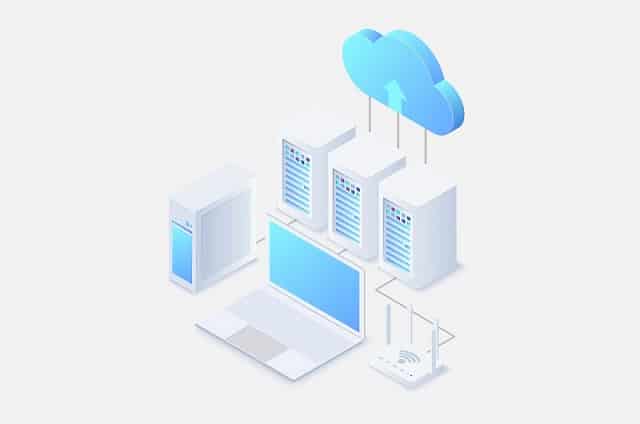Citrix is now present on public cloud platforms including Google Cloud and Microsoft Azure, following its partnership with these companies almost a year ago.
Companies using Citrix for several years are increasingly asking themselves the following questions: why and how to migrate to the cloud? what are the mistakes to be avoided?
This article describes various issues in the migration of a Citrix infrastructure to a cloud service. We are discussing general considerations here, which apply to other VDI solutions too.
Why migrate your Citrix infrastructure to the cloud?
Today, moving to the cloud seems inevitable, and not for financial concerns only… Here are some of the reasons why organizations are taking the plunge.
- Cost optimization & Scalability:Cloud hosting platforms offer the possibility to scale the size (computing and storage capacities) and availability of VMs according to user demand. This makes it possible to create or deactivate a VM within minutes. For example, the Smart Scaling feature on Azure makes it possible to schedule the number of VMs available at fixed times. This is a very appealing option from a financial point of view.
- Switch from a Capex model to an Opex model:Leaving On-Premise infrastructure to switch to a subscription model allows these expenses to be spent on an operational (Opex) basis, and no longer on an investment (Capex) basis.
- Users can access data from any device:Given the diversity of receivers now supported by Citrix (HTML 5, Chrome, Mac, iOS, Linux, etc.), moving to the cloud allows users to access data from any device and location. In addition, administrators have a range of options to scale and deliver applications quickly to anywhere in the world.
- Better responsiveness and Data security:In the event of a disaster or attack, a cloud infrastructure can be locked down or recovered more easily and quickly. In general, data backups and restoration are more reliable on a cloud infrastructure.
What are the points to watch out for when planning a Citrix migration to the cloud?
Beyond the classic project planning elements such as schedule, teams, costs, etc., particular attention should be paid to the following elements:
- Due diligence for security and performance:How will new workloads be run and secured? What software, hardware, and human resources will be required? Focusing on performance and safety is essential from the start of the project.
- Data migration:The migration of existing databases to the cloud is a project on its own. You will have to work to reduce the downtime and simplify the transition.
- Network transformation with SD-WAN:The transition from an MPLS WAN architecture to an SD-WAN architecture must be carefully planned.
- High Availability of VMs:Check the service level agreements of your cloud provider regarding the availability of VMs. For instance, Azure requires high availability on each of its VMs.
- Security:For better protection against attacks or data breaches, it is preferable to set up a dedicated private IP address for each VM. Place the VMs in the same subnet, and do not expose them directly to the Internet.
- Storage:Plan to create a dedicated storage account for each VM, to avoid reaching the limit of IOPS (input/output operations per second) allowed for each storage account.
- Expiry date of current On-Premise licenses:Don’t rush before cleaning up your current infrastructure. Check the expiry date of the current licenses, and try to plan the migration accordingly.
What are the different types of Citrix cloud migration?
Citrix describes different migration scenarios, depending on the scenario you choose when defining the project. They range from the pure and simple transition of the resource to the cloud to the complete paradigm shift, like moving to a SaaS application from an On-Premise one. Different types of migration are possible which are listed below:
- “Re-hosting: An existing application, server or operating system is moved as it is to a cloud server, made available by an IaaS provider. This is the most direct approach to migration.
- Platform transformation: The resource is moved while minor optimizations are made to middleware, APIs, operating system, or other attributes, to improve its execution in the cloud.
- Redesign: Modifications are made to the existing resource code in order to improve its performance in the cloud, which may incorporate technologies such as containers and PaaS.
- Rebuild: Completely rebuild the application or workload using a PaaS to make it cloud-native.
- Replacement: Old legacy applications are replaced with more suitable SaaS alternatives.
- Retention: In a hybrid approach, on-premise applications run parallelly and/or are connected to cloud services.”
After migrating a Citrix infrastructure to the cloud, what points should be kept in mind?
Congratulations, you have migrated your Citrix infrastructure to the cloud! You no longer have to worry about anything…or almost anything. Managing a cloud infrastructure on a daily basis presents some challenges, which are not only technical.
- Have appropriate resources:Migrating your infrastructure to the cloud does not mean that it will manage by itself. You will need a seasoned IT team, specifically trained to manage cloud platforms.
- Educate and train users on good security practices:If done correctly, migrating your infrastructure to the cloud will allow you to secure your data. However, end-users must be a part of this change and should be educated about the best security practices. BYOD, nomadism, and hybrid work are some themes that will have to be addressed by the IT team.
- Purchasing coordination:Good communication between the IT and purchasing departments of the different business units or subsidiaries is essential to harmonize practices, and avoid duplication or breaches of data integrity. Communication will be the key to assess the needs of all users and carry out a unified purchasing policy throughout the company.
- Network and latency, two critical points:A fully cloud-based infrastructure relies entirely on Internet access. To avoid latencies during data transfers, the network in the corporate LAN will have to be adapted to these new requirements.
INSIA has been providing virtualization services for the past 2 decades & can give you expert advice about your infrastructure. Click here to talk to experts about your cloud migration project.

